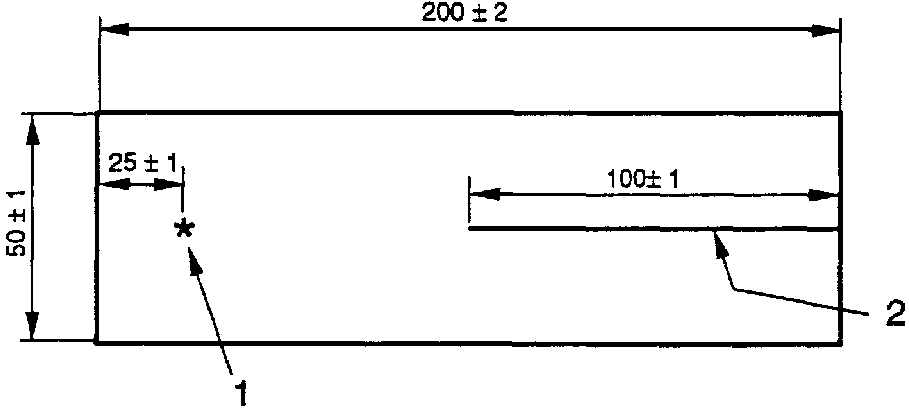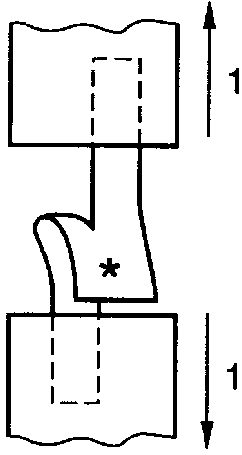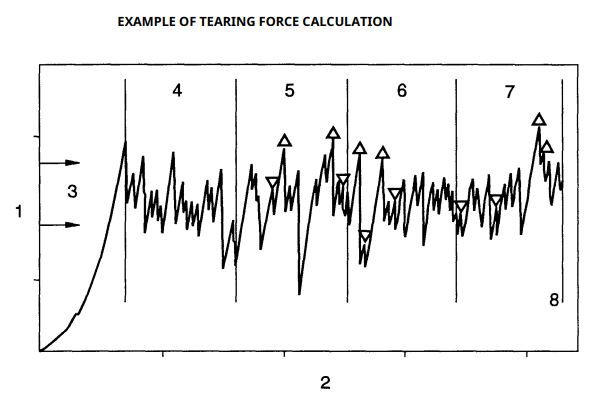This website uses cookies so that we can provide you with the best user experience possible. Cookie information is stored in your browser and performs functions such as recognising you when you return to our website and helping our team to understand which sections of the website you find most interesting and useful.
UNE-EN ISO 13937-2:2000
This part of EN ISO 13937 describes a unique tear method for the determination of the tear strength of a fabric, called the trouser test, carried out on a test piece cut in the shape of a trouser leg. The measured tear force is the force required for single tear propagation initiated when the force is applied parallel to the notch and the tissue tears in the direction of the applied force.
The test is mainly applied to shed fabrics
In general, the method does NOT apply to knitted fabrics and stretch fabrics.
A rectangular-shaped specimen is cut at the center of its shortest edge to achieve a trouser shape. The trouser legs are clamped in the grippers of a tensile testing machine to form a straight line and tensioned in the direction of the notch to tear the fabric.
Tear force is calculated from the force peaks in the automatically plotted graph
Two sets of test pieces are cut from each laboratory sample, one set in the warp direction and the other in the weft direction.
Each set must include at least five test tubes or a higher number, prior agreement between the interested parties. No specimen should be cut less than 150mm from the end of the fabric.
50 mm wide test pieces (trouser shape): It must be a rectangular strip 200 mm ± 2 mm long by 50 mm ± 1 mm wide; a notch of 100 mm ± 1 mm in length must be made from the center of the width. The end of the tear is marked (25 ± 1) mm from the uncut end of the strip, to indicate the position of the tear at the end of the test.


- The tearing force recording device starts up
- The tearing force is recorded in newtons.
- It is observed if the tear has propagated in the direction of force application and if the threads have frayed instead of breaking. The test must be considered valid when a) there has been no slipping of the threads in the fabric, b) there has been no slipping in the jaws, c) the tearing has been completed and has been carried out in the direction of application of the force.
- The graph of the peaks is divided, from the first peak to the last, into four equal parts. The first quarter should not be used for the calculation of the mean value. In the other three parts, the values of the two highest peaks and those of the two lowest peaks are taken and recorded.
- For each specimen, the arithmetic mean is calculated, in newtons, of the 12 peak values obtained.
- From the mean obtained for each specimen, the total arithmetic mean of the tearing force is calculated, in newtons, for each direction tested.
- If necessary, calculate the mean of the six highest peak values for each specimen, in newtons.


